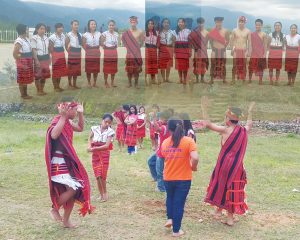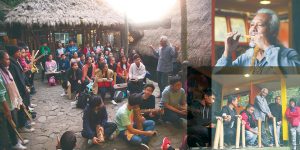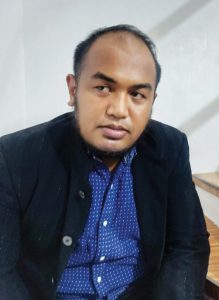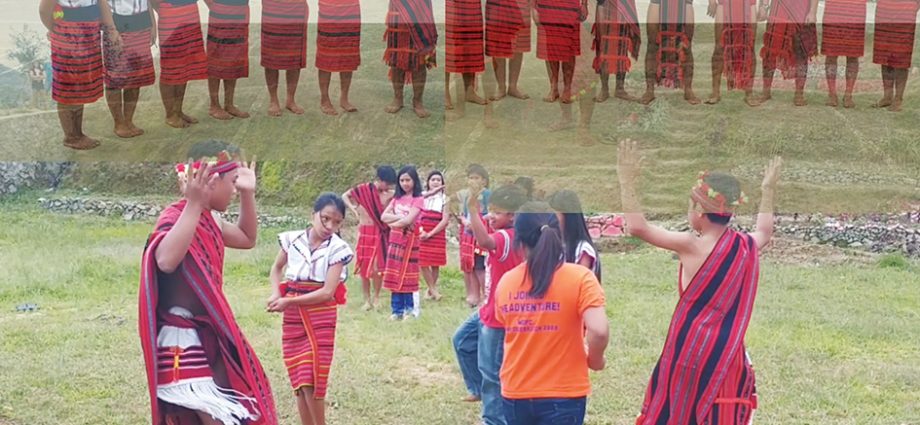Arjay Viray, Choral conductor and researcher, the Philippines
It has been well documented that the Philippines is a singing country. From international singing contests and talent searches to singer-songwriters for Hollywood film scores and soundtracks, Filipinos are literally everywhere.
On the other hand, of course, there is the plethora of choirs from the Philippines that have consistently excelled in numerous choral competitions abroad during the past decades. The Ateneo Chamber Singers, the University of Santo Tomas Singers, the University of the Philippines Singing Ambassadors, the De La Salle University Chorale, the Ateneo College Glee Club, the Philippine Normal University Chorale, Imusicapella, and the Philippine Madrigal Singers – to name but a few – are all internationally acclaimed Filipino choirs. I have been asked countless times by peers from different parts of the world whether there is a secret ingredient behind these exceptional singing groups, something I have never really thought about and responded to until recently. Certainly, formal music education has played a major role, but I truly believe that there is something bigger and deeper – something more innate and cultural.
Oral transmission in cultural and artistic expression is still common practice for many areas in the Philippines. It is loosely defined as the mode of preservation and promotion of culture not in the formal context of courses and learning areas, but through informal and non-formal apprenticeship and experiential learning. This article examines some of these practices and traditions in one of the most revisited and referenced indigenous cultures among Filipinos – the Cordillerans.
History of Musical Heritage
The Cordilleras – formally listed as the Cordillera Administrative Region (CAR) – is one of the seventeen regions of the Philippines. Located in the northern part of Luzon, it comprises six provinces – Abra, Apayao, Benguet, Ifugao, Kalinga, and Mountain Province. The inhabitants speak several different languages, such as Tinguian/Itneg, Ifugao, Kalinga, Ibaloi and Kankana-ey; the majority also speak and understand Iloko/Ilocano – the language of the lowland areas of Northern Luzon (Ilocos, Region 1) as well as of Cagayan (Region 2) and a small part of Central Luzon (Region 3).

Various ethnomusicological research initiatives have been conducted in the Cordillera region over the past decades, and it has been well documented that Cordillerans have many musical traditions ingrained in different aspects of their lives, including agriculture, economics, socio-political matters, and belief systems. For example, oral narratives, including literary epics like the Ifugao Hudhud and the Kalinga Ullalim, are believed to have been chanted during rice sowing, harvest, and, at times, at funeral wakes. Complete recitation of these takes several days – sometimes weeks – depending on the function for which the chant is used. Function also affects the varying configurations: chants recited during wakes are oftentimes unaccompanied and solemn, while recitations for harvest are more festive and likely to include the Gangsa (flat gongs) and bamboo percussion instruments. Another example is the Cañao, among the Kankanaey and Ibaloi groups of Benguet. It is a festival for the purpose of seeking approval, appeasing the spirits, or simply thanksgiving and involves a great deal of community singing, bamboo and gong playing, and dancing. But is there evidence to corroborate the idea that these traditions actually contribute to the development and propagation of choral singing?

Unwritten Traditions of Polyphony, Heterophony, and Polyrhythm
These Cordilleran cultural traditions are passed on from generation to generation. The songs, the dances, and the rhythmic patterns of the instruments are taught quite differently from the way centuries-old art songs and sonatas have been handed down to the present time. Instead, they are acquired by younger generations directly from the community, by observing the elders. Since most of the traditions and practices involve community singing, music-making, and dancing, the art and practice of singing in a group is innate among Cordillerans, who have been exposed to themes and motifs ranging from simple stepwise and pentatonic melodies to more complex, embellished ones. Their consistency in pitch – though perceived as informal, subjective, and, in essence, ephemeral – is actually based on soundscapes present in the environment that, in turn, become a sonic constant. With lots of instrument playing and dancing, Cordillerans have a very strong sense of rhythm. Sophisticated individual rhythmic patterns that interlock with one another – usually in sets of six and graduated in size – produce intricate melodies that are oftentimes used to accompany the singing and dancing. Examining vocal resonance through a scientific lens is worthy of an entire career in research, but what is important to note is that Cordillerans, being from the highlands, have the obvious benefits of altitude and atmospheric pressure on their side.
Strong rhythmic skills, excellent ensemble musicianship, exceptional sense of melody and harmony, and vocal resonance – put these together and you have the perfect combination for an ideal prospective chorister. More importantly, these are all natural traits of Cordillerans prior to receiving any formal music education and training.

Setting and Settling the Tone
It is no coincidence that the musical principles of tone, tune, and intonation, and the philosophical concepts of attunement, and even atonement, came from the same etymological origins. The Latin tonus is the obvious origin of several derivatives, such as the Spanish and Italian tono and French ton, which are all musical in nature. On the other hand, the older Greek tonos also included in its meanings “tightening” – which in essence is the act of decreasing the distance or lessening the separation between two objects – the tie, so to speak. Singing among the Cordillerans is not the be-all and end-all; it is just one of the many components of a greater and grander scheme that characterises their heritage and identity. Following Gardner’s Multiple Intelligences, the musicianship and musicality exemplified by the Cordillerans are not just simple artistic and musical intelligences but are rather manifestations of the intersections among several Intelligence types, including Visual-Spatial, Interpersonal, Intrapersonal, and even the more recently added Naturalistic Intelligence. One of the many things that the COVID-19 pandemic made us do is reflect and introspect. For the Cordillerans, singing in a group is not just an art form; it is their tight bond to their environment and their tie to the world. Given all the documented observations and the vast corpus of research already written about these cultural and musical practices among Cordillerans, we can finally put to rest the myth of the “secret ingredient”. There’s no secret ingredient in something natural and organic. Just look at some of the excellent choirs coming from this region, such as the University of Baguio Voices, the Saint Louis University Glee Club, the Cordillera Chamber Singers, and the University of the Cordilleras. They have become home to many amazing Cordilleran singers over the past few years – some of whom have made waves in international competitions as well.
It is good that some of these cultural practices have made their way into the classroom music curriculum among Philippine schools. Singing, just like other forms of artistic expression, is always better when rooted in one’s local culture. It would be good to use the same lens to examine the folk choral singing traditions of Philippine groups from other geographical settings (coastal areas, lowlands, etc.), but we will save that for another article.
 Arjay Viray graduated with a master’s degree in Choral Conducting from the Philippine Women’s University School of Music and is currently pursuing his Doctorate in Curriculum and Teaching at the Miriam College Graduate School. He has sung with choirs such as the Philippine Madrigal Singers, the Philippine Normal University Chorale, and the Ateneo Glee Club, where he also served as Assistant Conductor for Choral Development. He sang with the World Youth Choir from 2008 to 2011 and the Time Ensemble from 2014 to 2019. He currently sings with the Ateneo Chamber Singers under the tutelage of Dr Jonathan Velasco. At the present time, Arjay is affiliated with the Philippine Choral Directors Association, the Philippine Center for Gifted Education, the Kodály Society of the Philippines, and the International Federation for Choral Music. He is a full-time faculty member in Music and Performing Arts at Guang Ming College.
Arjay Viray graduated with a master’s degree in Choral Conducting from the Philippine Women’s University School of Music and is currently pursuing his Doctorate in Curriculum and Teaching at the Miriam College Graduate School. He has sung with choirs such as the Philippine Madrigal Singers, the Philippine Normal University Chorale, and the Ateneo Glee Club, where he also served as Assistant Conductor for Choral Development. He sang with the World Youth Choir from 2008 to 2011 and the Time Ensemble from 2014 to 2019. He currently sings with the Ateneo Chamber Singers under the tutelage of Dr Jonathan Velasco. At the present time, Arjay is affiliated with the Philippine Choral Directors Association, the Philippine Center for Gifted Education, the Kodály Society of the Philippines, and the International Federation for Choral Music. He is a full-time faculty member in Music and Performing Arts at Guang Ming College.
teacherarjayviray@gmail.com
Edited by Richard Kutner, USA

